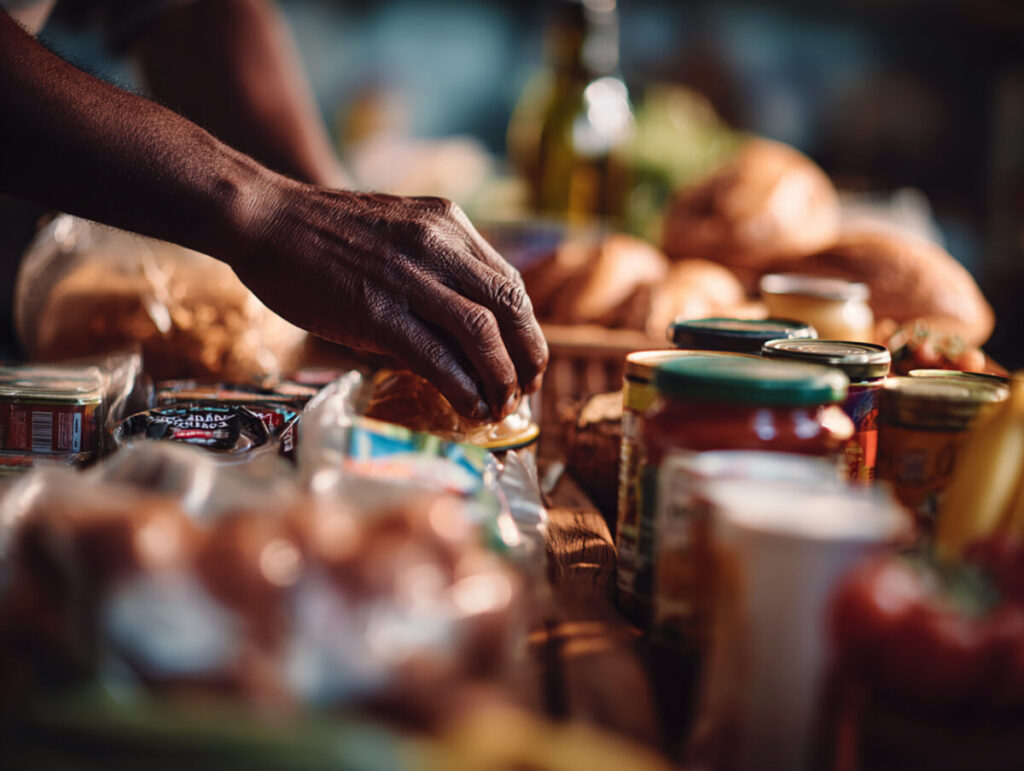By Lori Lee
NDG Contributing Writer
After 25 states sued over the government’s failure to pay SNAP benefits, two federal judges gave the Administration a choice—either pay full benefits or exhaust Agricultural Contingency funds. Monday, the Trump Administration agreed to pay the lesser amount, or $4.65 of the $5.5 billion fund, falling short of full benefits by about 50% and claiming full funding isn’t available due to the shutdown.
The decision faces challenges that argue the government has access to other nutrition reserves, NPR reported, this as Trump warns of weeks- or months-long delays in getting people the funds. The move means 40 million Americans and 3.5 million Texans will receive only 50% of benefits, and the money will be late.
An interruption in benefits has not happened since the program’s inception in 1939, when it was set up to relieve farming surpluses and help displaced people during the Great Depression.

In the midst of the chaos, a CBS poll indicates 61% of Americans are dissatisfied with Trump’s handling of the economy. Many people are on SNAP because they’ve lost their jobs, noted Gina Plata-Nino of the Food Research and Action Center at an October American Community Briefing.
“When there’s a strong economy, when there’s strong employment, when people are getting paid livable wages, people are not on SNAP,” she said.
The SNAP shut down and future cuts to the program will hurt local grocery stores, corner stores, and farmers’ markets in low-income regions, including rural areas, which have a tendency to have lower wages. This includes Texas, the second greatest recipient of SNAP, they reported.
The cuts will fall squarely on the backs of the disabled, seniors and U.S. veterans, while about half of SNAP recipients in Texas are children, according to FeedingTexas.org. The partial funds will fall short for those least able to weather the storm, especially those with serious illnesses, as Affordable Care Act credits expire and as inflation continues to climb after falling to 2.9% last year.
Sending out SNAP funds is a complex process, added Jamie Bussel, Senior Program Officer of the Robert Wood Johnson Foundation, also at the briefing. The government must divvy up the partial funds, send case files to EBT contractors, then to the USDA for processing so recipients can then swipe cards and buy groceries.
Yet, funds were already set aside by Congress for the emergency, said Joseph Liobrera, Senior Director of Research for Food and Assistance Policy at the Center on Budget and Policy Priorities. This is why 25 states sued. The law is very clear, said Liobrera. SNAP contingency funds can be used for all necessary program activities, including paying for benefits. The litigation was unnecessary, the disruption a political choice, he said. The delay will only hurt the economy as the court costs are passed onto taxpayers.
People have already paid into the safety net, which should free up money for their needs, like automobiles, housing, and clothes, all of which work to fuel the economy. For every dollar spent in SNAP benefits, $1.50 to $1.80 is generated in local economic activity, the Food Research and Access Center reported.
The Big Beautiful Bill signed into law on July 4 this year made large-scale cuts to the program, said Liobrera. New rules will cut SNAP by $187 billion, or 20%, through 2034, the cuts affecting 4 million people, CBPP estimates. Through tax and social changes, the bill shifts major cost burdens to states. The radical shift will make SNAP programs unaffordable for most states, and some states may lose their programs altogether.
The new rules will deny food assistance to many immigrants living lawfully in the U.S., including refugees, those granted asylum, and certain survivors of domestic violence and trafficking. It’s important to remember that people who lack documentation were always ineligible for SNAP, said Liobrera.
The law reduces benefits by adding paperwork and work requirements, eliminating exemptions for people experiencing homelessness, veterans, and those aging out of foster care, he said.
Some states already make the paperwork incredibly burdensome, added Gina Plata- Nino, an interim director for SNAP at the Food Research and Action Center. Almost 40% of people on SNAP are children, their caretakers making less than $1,100 a month, making covering basic expenses very difficult, explained Plata-Nino. Plus, communication to recipients has been absent, meaning many will be unprepared when the changes hit.
The shifts in the system follow Project 2025 guidelines, thus creating chaos and panic, she said. The Office of Management and Budget (OMB) is the one with the authority to request funding from the Secretary. OMB is changing the way the shutdown goes forward, and it is making state compliance very difficult, she said.
Eric Valladeras, Executive Director at Family Connections, who spoke at the briefing, said:
“We’re seeing caregivers under financial strain are experiencing an increase in chronic stress and anxiety.” Where the cost of living is high, the gap between earnings and expenses is incredibly vast, he said. Childcare alone costs between $20,000 and $30,000 a year, a 2022 county survey showing 80% of parents say finding affordable childcare is somewhat or very difficult.
Some families also need case workers or mental health support to survive and thrive, said Valladeras. Yet, without basic housing or food, parents cannot ensure their children’s healthy development or well-being.
Bussel encourages everyone to support local food banks, partner with local farms or create new ways of supporting nutrition in their communities. They can be a grocery buddy, cover food for a neighbor, or work with parent-teacher organizations to help kids take food home. Visit findhelp.org or localharvest.org to get started.




